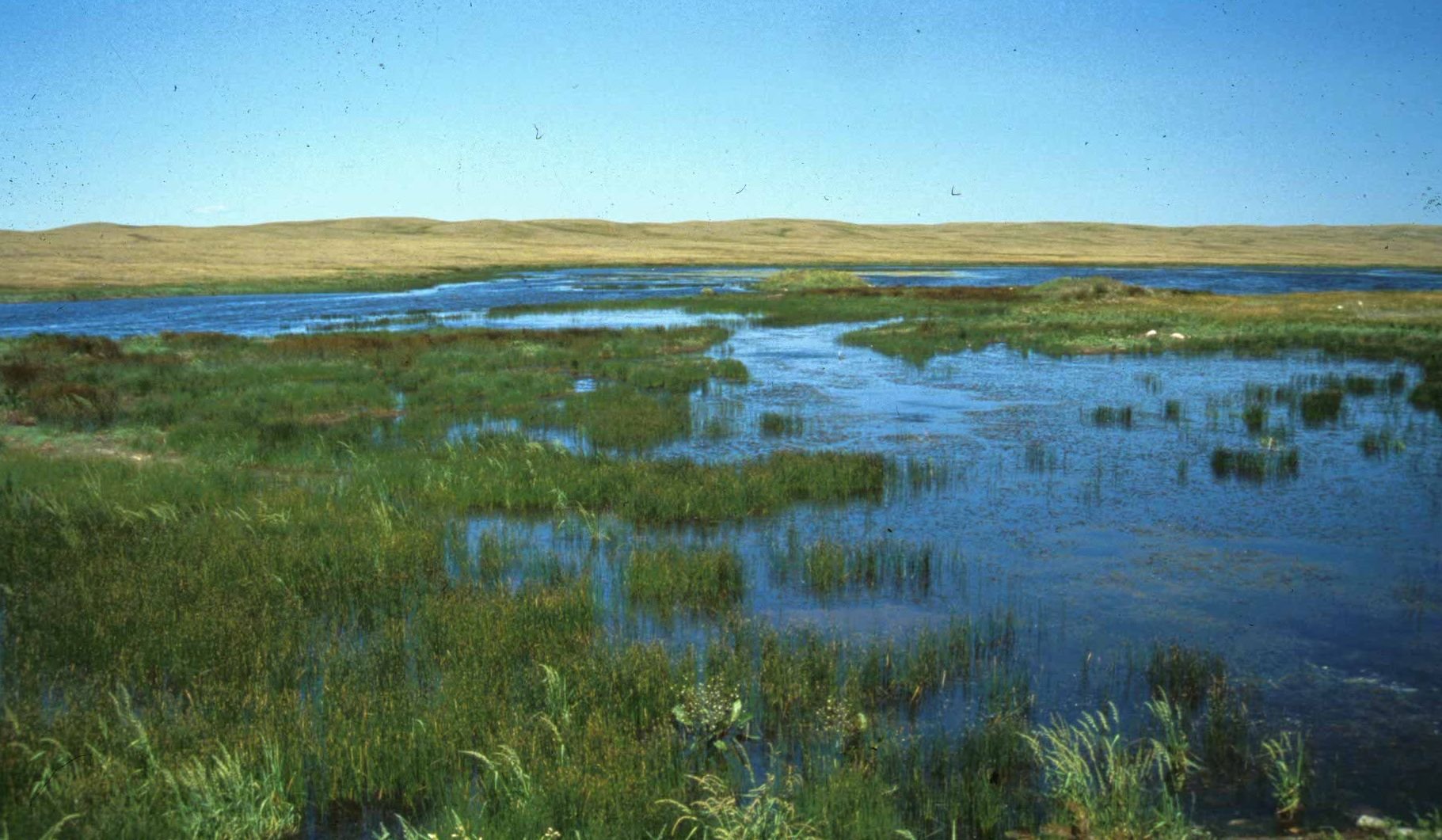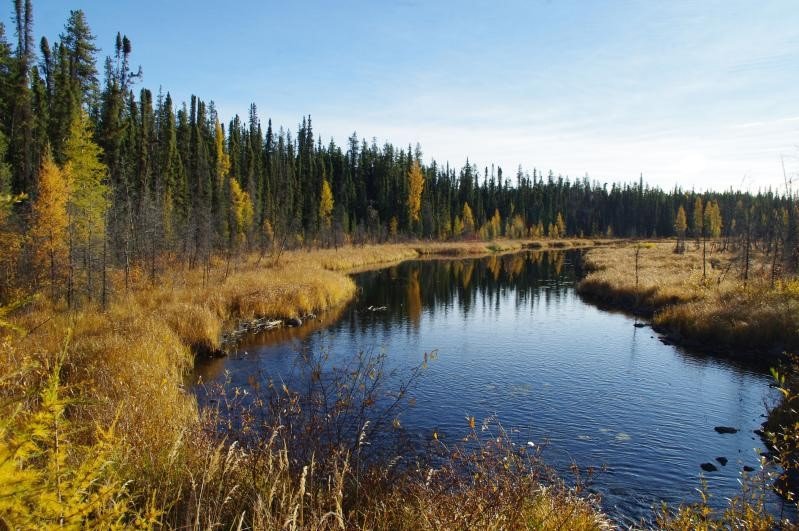Photo courtesy of The Canadian Encyclopedia
Wetlands are one of the planet's most important and under-appreciated natural communities.
In Canada, five main types of inland wetlands exist: marshes, swamps, bogs, fens, and ponds.
A marsh. Photo courtesy of Wetland Policy
Marshes are areas periodically inundated by water. They contain plants like reeds, rushes and sedges. They are typically shallow and rich in nutrients.
Marshes moderate floods and prevent soil erosion. They filter and clean the water. Marshes also provide important habitat for a diversity of species including moose, beavers, muskrats, and birds.
Swamps are areas with standing or gently moving water, often located between forests and other wetlands. Their nutrient-rich soil can contain peat deposits. Trees such as spruce, tamarack, birch, and poplar, can be found in swamps, as well as shrubs, sedges and grasses
Swamps moderate floods by slowing the flow of water. They protect against erosion and sedimentation and provide a habitat that supports a variety of species.
Painted turtles. Photo courtesy of Ontario Parks
Bogs are areas with a high water table lacking in nutrients. The water is often acidic and deoxygenated. Bogs contain dense deposits of poorly decomposed organic material known as peat. Bogs are home to sphagnum moss, shrubs and spruce trees.
Peat bogs store incredible amounts of carbon, while also storing water and providing habitat to many species, including the threatened woodland caribou.
Fens are peatlands similar to bogs. They have a high water table, slow drainage, and generally lack nutrients. Types of fens differ depending on the quality and quantity of water. These include open fens that lack trees and shrubs, treed fens with sparse vegetation including tamarack, spruce, shrubs, mosses and sedges, and shrubby fens with birch, willow, sedges, and mosses.
A pond. Photo courtesy of Edmonton & Area Land Trust
Ponds or shallow-water wetlands consist of open water generally less than two metres deep. They may have floating or submerged aquatic plants. As with all wetlands, ponds provide important habitat and support biodiversity.
Canada contains 25% of the world’s wetlands. These cover roughly 1.29 million square kilometers.
Across the country, wetlands are being destroyed by industry and agriculture. They are drained and filled so people can construct buildings, farm the land, or install infrastructure. Wetlands also face threats from pollution and climate change. As droughts intensify, wetlands can dry up.
Worldwide, 60% of wetlands have been lost. Wetlands are disappearing faster than any other natural community.
The best way to protect wetlands is to preserve the ones that remain intact and prevent them from being damaged.
Photo courtesy of The Canadian Encyclopedia
One effective way to restore wetlands is to allow beavers to return. Beavers are natural wetland engineers and a keystone species. They have the ability to create new wetlands and revitalize existing ones, improving the habitat for a variety of other species. Beavers were once abundant on this continent, however, they were diminished to near extinction by the fur trade. They have since started to return and where beavers go, biodiversity inevitably follows.
Attacks on the Greenbelt have put some of Ontario’s wetlands at risk. Groups like Environmental Defence are working hard to protect them.
Wetlands may not be the first thing that springs to mind when we think about climate change and biodiversity, but they are critical to the health of our planet. We know how to restore and protect wetlands and we must now do so post-haste if we are to help create a liveable future for all.





